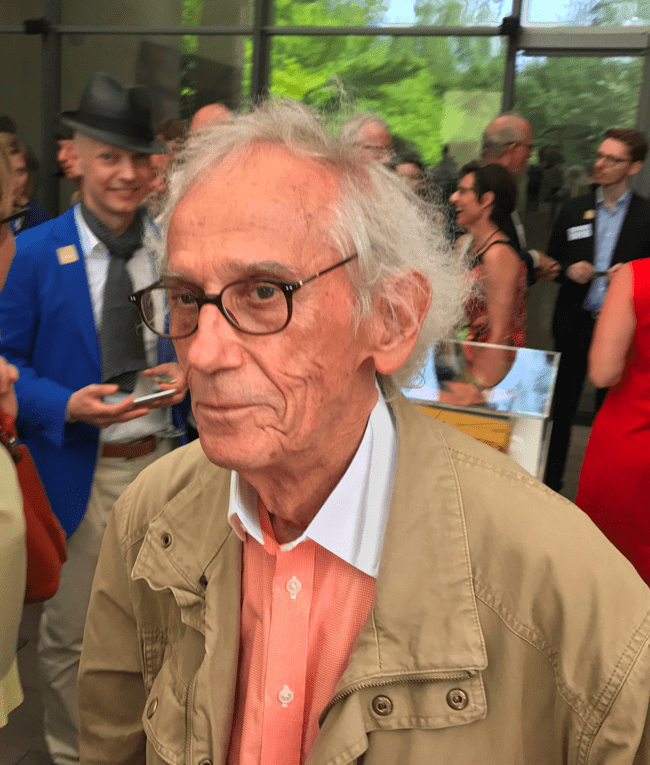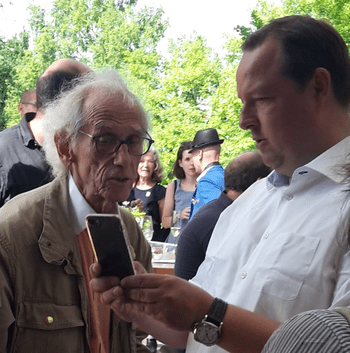Christo

Works
Unique
Graphics/Editions
Exhibitions
Biography

Christo
Christo Vladimirov Javacheff (1935–2020) and Jeanne-Claude Denat de Guillebon (1935–2009), known as Christo and Jeanne-Claude, were artists noted for their large-scale, site-specific environmental installations, often large landmarks and landscape elements wrapped in fabric, including the Wrapped Reichstag, The Pont Neuf Wrapped, Running Fence in California, and The Gates in New York City's Central Park.
Born on the same day in Bulgaria and Morocco, respectively, the pair met and married in Paris in the late 1950s. Originally working under Christo's name, they later credited their installations to both "Christo and Jeanne-Claude." Until his own death in 2020, Christo continued to plan and execute projects after Jeanne-Claude's death in 2009.
Their work was typically large, visually impressive, and controversial, often taking years and sometimes decades of careful preparation – including technical solutions, political negotiation, permitting and environmental approval, hearings, and public persuasion. The pair refused grants, scholarships, donations, or public money, instead financing the work via the sale of their own artwork.
Christo and Jeanne-Claude described the myriad elements that brought the projects to fruition as integral to the artwork itself, and said their projects contained no deeper meaning than their immediate aesthetic impact; their purpose being simply for joy, beauty, and new ways of seeing the familiar.
A selection of their many celebrated public projects include Wrapped museum of Contemporary art, Chicago 1968-69; Wrapped Coast, One Million Square Feet, Little Bay, Sydney, Australia, 1968-69; Valley Curtain, Grand Hogback, Rifle, Colorado, 1970-72; Running Fence, Sonoma and Marin Counties, California, 1972-76; Surrounded Islands, Biscayne Bay, Greater Miami, Florida, 1980-83; The Pont-Neuf Wrapped 1975-1985; Reichstag, Berlin, 1971-95; The Gates, Central Park, New York City, 1979-2005; and more recently The Floating Piers, Lake Iseo, Italy, 2014-16 and The London Mastaba, Serpentine Lake, Hyde Park, 2016-18. In 2021, Arc de Triomphe, Wrapped (Paris), was completed posthumously, almost 60 years after its conception.
All of Christo and Jeanne-Claude's projects are free and open to public, and are paid for through the sale of Christo's original works of art. This process has allowed the artists full creative control and to freely pursue their singular aesthetic vision. Though they comprise an expansive array of materials and have occurred in diverse places around the world, all of Christo and Jeanne-Claude's projects share a common impermanence-re-envisioning their environment, allowing viewers to see spaces with a new consciousness that lasts long after the work of art is removed.
